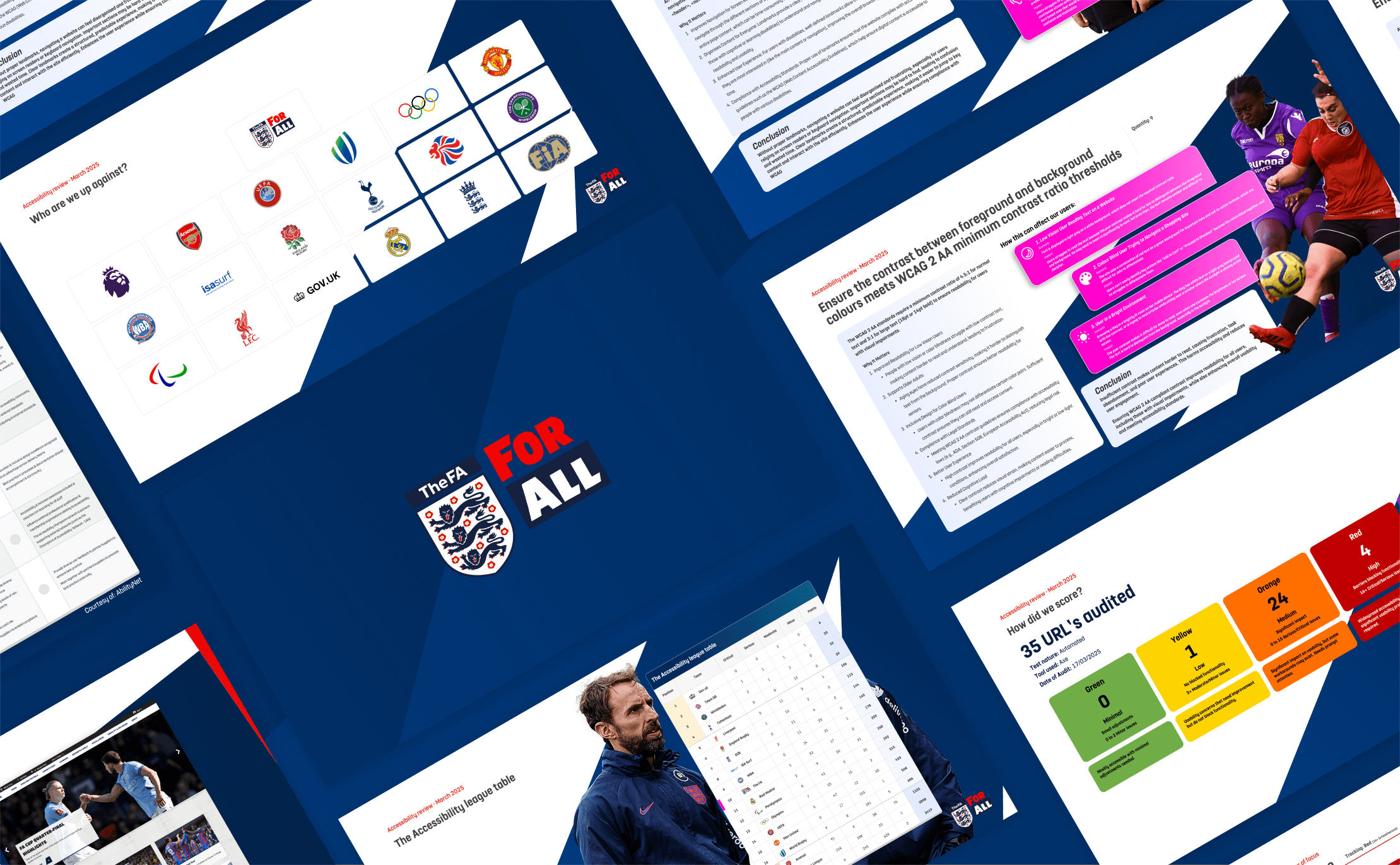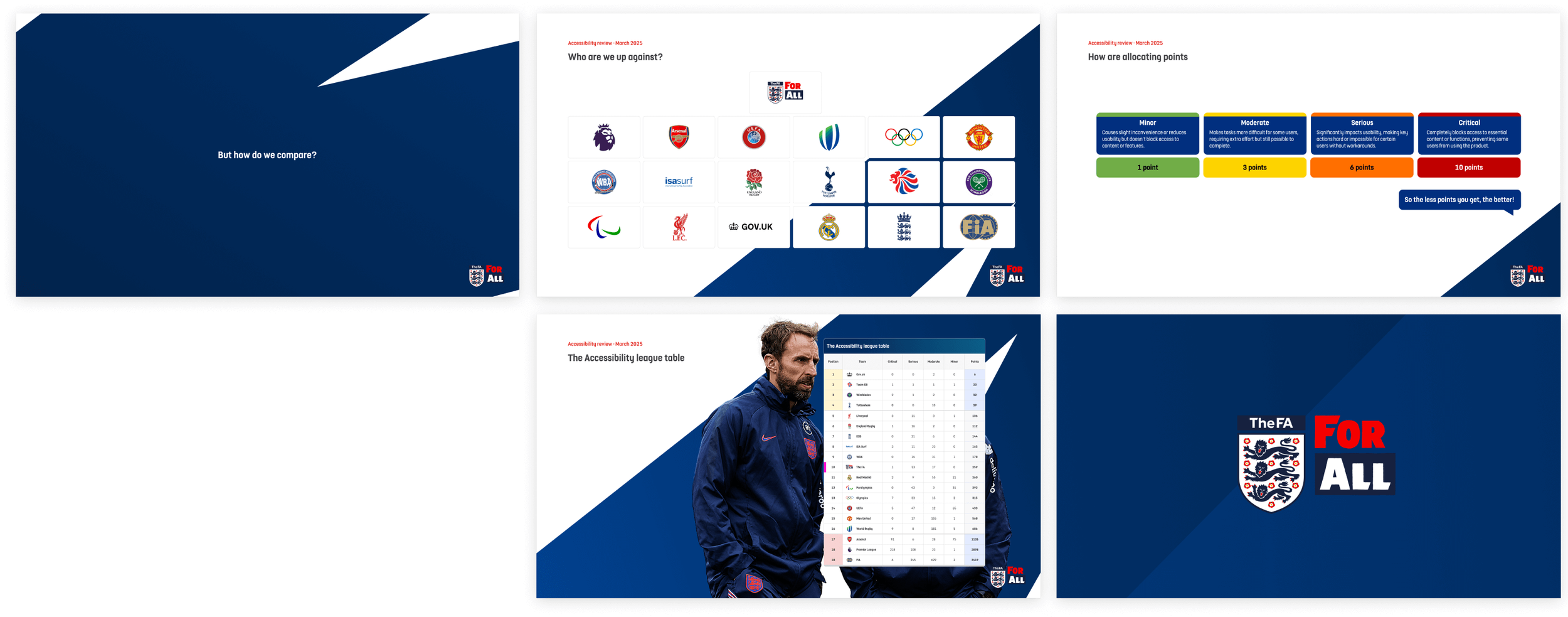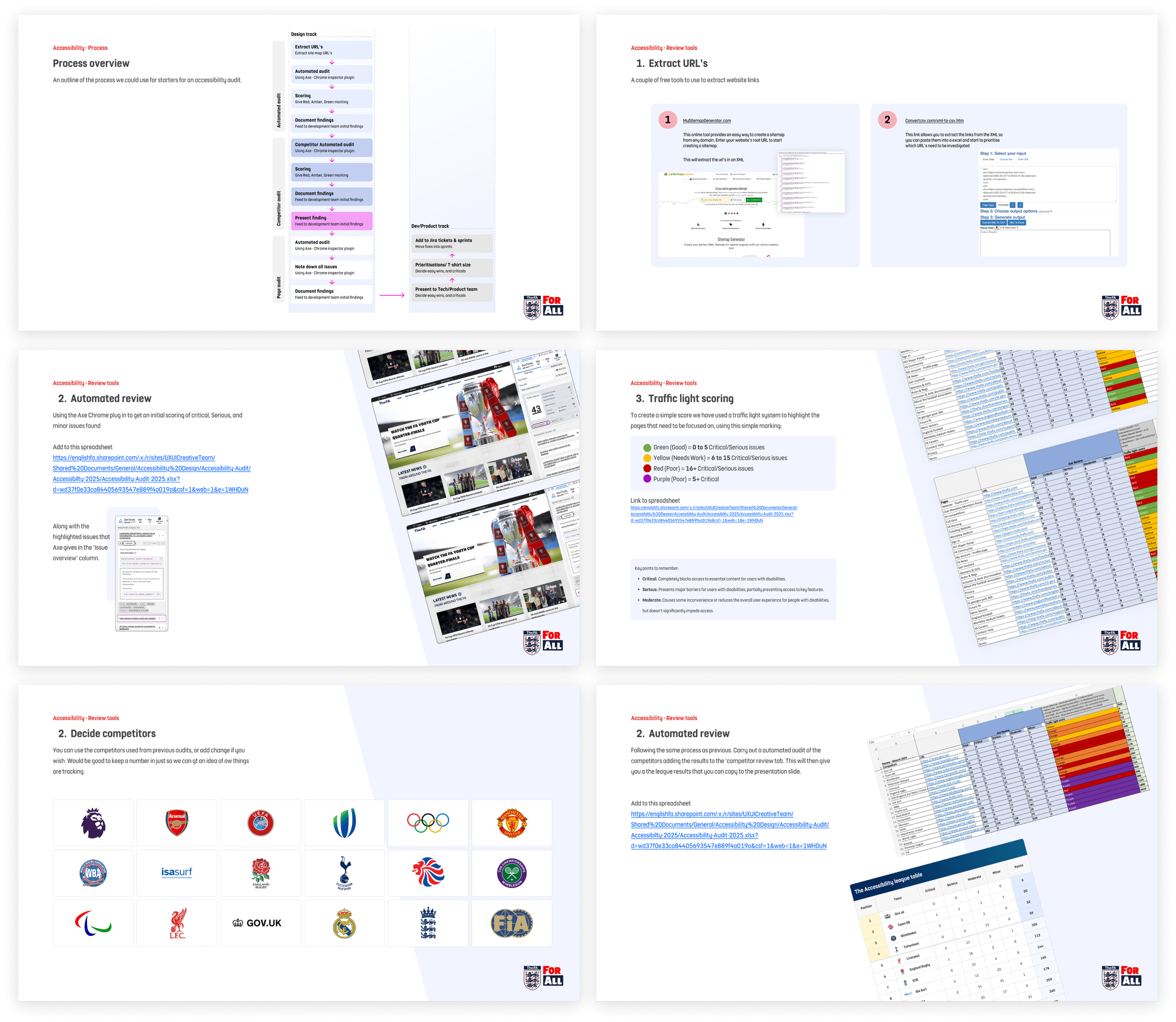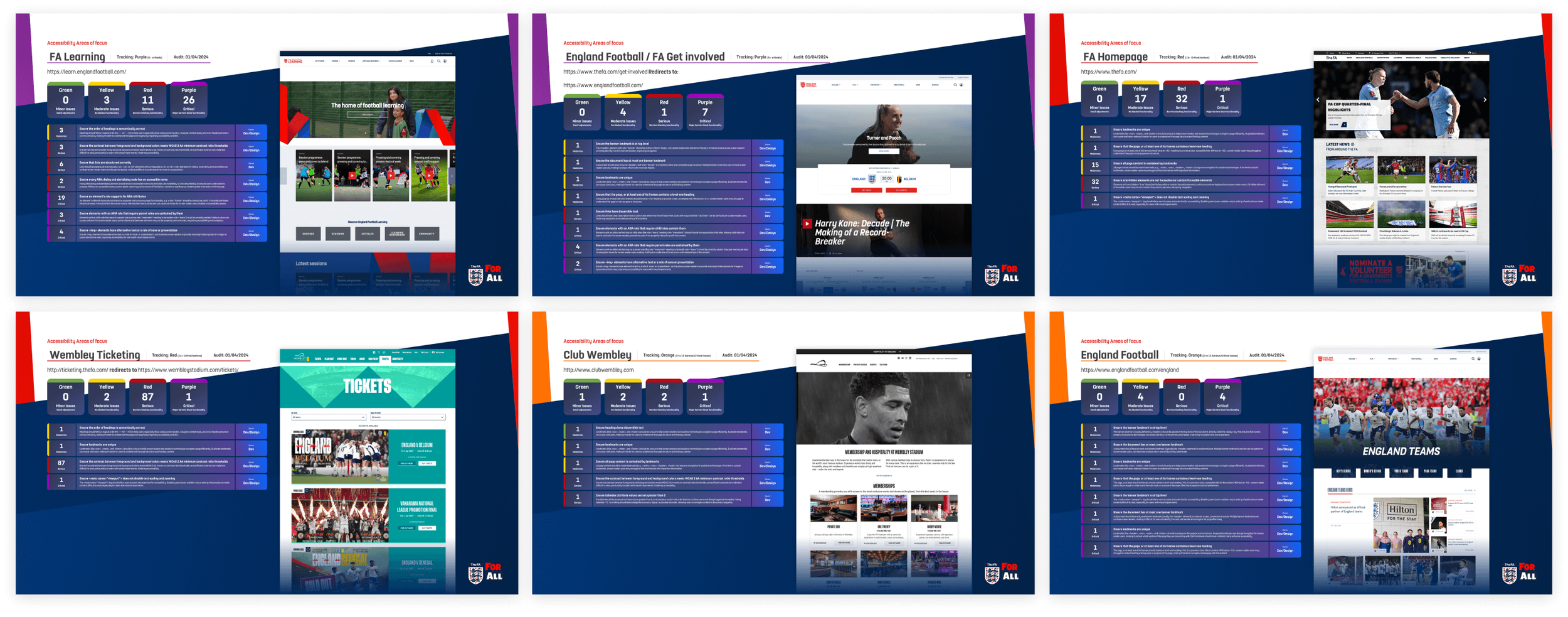Accessibility Benchmarking & Maturity Framework
Auditing, benchmarking, and embedding accessibility maturity across The FA.
Problem: The FA wanted to gain a clear picture of how its digital platforms were performing in terms of accessibility, to understand where it currently stood and help the wider business see the gaps and opportunities for improvement..
My role: Led the accessibility audit and benchmarking process, developed a traffic-light scoring framework, created stakeholder presentations, and introduced the Digital Accessibility Maturity Model (DAMM) to embed long-term improvement.
Outcome: Delivered a clear benchmark of accessibility across FA platforms, gained stakeholder buy-in through engaging visual storytelling, implemented a repeatable audit process, and set WCAG 2.1 AA as the testing standard — establishing a roadmap for future maturity.
Skills used: Accessibility audit | WCAG 2.1 AA | axe extension | Benchmarking | Competitor analysis | Documentation | Storytelling & visualisation | Stakeholder engagement | Developer collaboration | Process design | Accessibility maturity modelling | QA & testing alignment
Discover. Finding the Right Tools
I began by researching and testing a range of accessibility tools, comparing free and paid options to find the most effective setup. The axe Chrome extension was selected as the primary tool, offering a reliable and repeatable way to assess accessibility across FA websites. Each tool’s capabilities and limitations were documented to guide future audits.
Auditing, Benchmarking FA Websites
Using axe, I audited landing pages across all key FA websites and introduced a traffic-light scoring system to visualise performance. Results were recorded in Excel, allowing sites to be compared side-by-side and highlighting where improvements were needed most. This provided the first clear accessibility benchmark for the organisation.
Presentation and Generating Interest
Working with the Design Director, I created a stakeholder presentation that framed accessibility not as a compliance task but as a business opportunity. The slides connected findings to key risks and benefits — brand reputation, legislative compliance, and user inclusion — and featured a Premier League-style table comparing FA sites against other major sports brands (Rugby, Tennis, Olympics) and rival football clubs (Liverpool, Man Utd, Spurs, Arsenal) to make the insights memorable and relevant.
Documenting the Process
A detailed guidance document was produced outlining the most common accessibility issues, how they affect users and the business, and practical fixes for design and development teams. The process was formalised into a repeatable quarterly or six-monthly framework, allowing the FA to track its accessibility progress over time.
Future Thinking, The DAMM Model
To embed accessibility beyond a single audit, we began implementing the Digital Accessibility Maturity Model (DAMM) developed by AbilityNet. This provided a structured way to understand where the FA currently sat in terms of accessibility maturity and what steps were needed to progress across culture, process, and delivery.
Collaboration with Developers & Test Team
I met with developers to discuss each issue in detail, identifying quick wins and those requiring deeper technical consideration. This helped shape a realistic improvement plan. I also worked with the testing team to agree that WCAG 2.1 Level AA would be the baseline standard for all future FA products.
Outcome
Established a clear accessibility benchmark across FA platforms.
Produced reusable guidance and a documented process for ongoing audits.
Elevated accessibility into a business-level conversation.
Created a memorable competitor comparison framework.
Helped developers prioritise quick wins and complex fixes.
Embedded repeatable auditing cycles and introduced the DAMM model for long-term maturity.
Set WCAG AA as the standard for testing and delivery.









